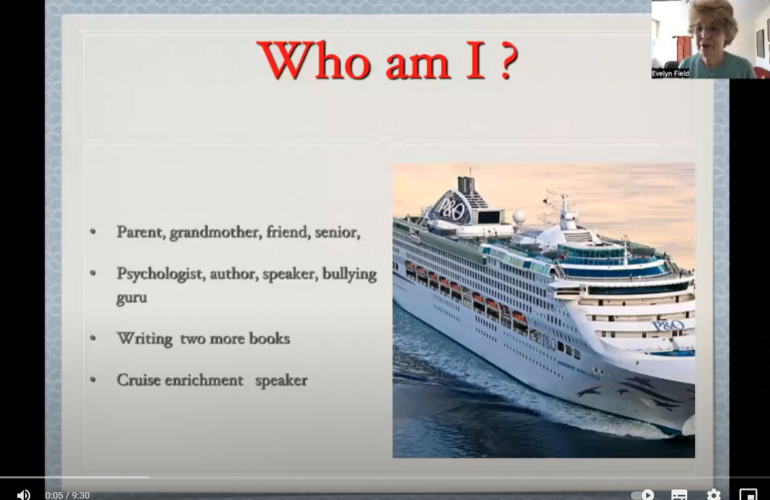Treatment – Workplace
Treatment: Workplace Bullying
- Bullying can cause physical, psychosocial, social and personality injuries for targets, victims, bullies, bystanders and families.
- The sooner you obtain treatment the better, don’t wait for months or years.
- Even if you go to court later, some symptoms will never heal.
- Some clients can get health fund rebates, managed health care plan (Medicare, Australia) or Workcover to subside their treatment. Some can deduct sessions for being work related.
Workplace Bullying
- Many workplaces don’t manage workplace bullying effectively as they deny its impact on employees and productivity.
- If the bullying has just begun then seek help from your family doctor, speak to your local professional association of psychologists and request someone who is professionally skilled at helping you manage workplace bullying.
- You will need to learn how to block the bullying behaviours and work out your best options as regards work, legal rights etc.(Refer ‘Bully Blocking At Work ‘) Treatment should take 4-10 sessions on average.
- If you have been seriously injured by the bullying, and are still at work or have left it, then you will need to see a psychologist who has specific experience in dealing with bullying at work.
- You may also need to see a psychiatrist with similar expertise.
- You may need to consult your therapist for many months or years to recover from the impact of the bullying and subsequent medico-legal hazards.
- Be aware that although there are specific day or residential clinics for assessing and treating victims of workplace bullying in Germany, Norway, Italy, there are none in USA, Australia, New Zealand, England.
Training for therapists
- Treating targets of bullying is a new area.
- There is no mention of bullying in the DSM IV, the “psychiatrists bible”, and it is mentioned at the back of the DSMV. It can cause
- Bullying is caused by dysfunctional systems, at school or at work. It is further affected by individual personalities. Thus treatment issues are complex.
- Bullying causes many individual injuries, including depression, anxiety disorders, panic attacks, post traumatic stress disorder, physical symptoms, social difficulties and can change personality.
- Thus treating practitioner needs to be knowledgeable and skilled in many different areas, understand bullying and be able to provide short and long-term therapy (for adults) and use a range of treatment methods, depending on their clients’ needs.
- Evelyn Field has worked as a therapist for many years and provides full day training for therapists in treating targets of school bullying or workplace bullying, they have been approved by the Australian Psychological Society, and can be used for professional development.
- Evelyn Field OAM, (lead author), Dr Patricia Ferris, (corresponding author), published a chapter on “Diagnosis and treatment, repairing injuries caused by workplace bullying.” in ” Workplace Bullying. Dignity and Inclusion at Work, in Handbook of Workplace Bullying, Emotional Abuse and Harassment, Springer. (2019
- Regardless of the form it takes, bullying at work arguably threatens an individual’s survival and functioning as a social being. Even when bullying behaviours appear subtle or mild in comparison to other forms of abuse, exposure can cause psychological and physical injury characterized by common physical, psychological, social and cognitive symptoms. Although most targets experience symptoms of depression and anxiety, the major cause of conflict in relation to diagnosis and therefore treatment focuses on whether or not bullying can constitute a traumatic, life-threatening experience.
This chapter will explore considerations in the genesis of physical and psychological symptoms, associated with workplace bullying, including trauma. It will also explore approaches to diagnostic frameworks, challenges in diagnosis, and current treatment approaches for targets of workplace bullying. It will identify the key processes in any treatment plan and the three core therapeutic approaches, namely psycho-education, goal-based therapies and process therapy, while including some of the challenges that therapists encounter in practice.
The therapist’s goal is to enable a client to heal, become re-empowered and develop the skills to work again or manage a forced retirement. The treatment plan is dependent upon the bullied worker’s physical health and emotional well-being needs being managed by their family doctor and a trained mental health team, to help them regain confidence and return to work. In addition to the role of the employer, which can reduce or exacerbate the impact of bullying, some of the hazards that therapists encounter will be included.
OR
CONCLUSION
The recent evidence around workplace bullying demonstrates that although some employees avoid injury, others can be injured for months or years. In addition to the injuries experienced as a consequence of workplace bullying, when a target’s request for safety, validation or compensation is denied, their symptoms can be exacerbated further. Thus injured targets develop many different, symptoms of anxiety, depression and trauma.
In this chapter we have tried to summarize some of the basic issues in understanding why some employees are injured, why they require immediate validation, safety and restorative solutions, under the guidance of responsible, respectful management. When targets fail to receive these interventions, they may become further injured and require skilled psychological intervention.
Although currently there are no specific diagnoses or evidence-based treatments for workplace bullying, we have tried to incorporate current therapeutic thinking and practice towards creating an expanded framework for understanding, diagnosis, treatment and further research for bullied targets. Consequently, we synthesized different psychological approaches towards diagnosis and treatment, and identified some key processes in any treatment plan. We have also highlighted the three core therapeutic approaches, namely, psycho-education, goal based therapies and process therapy, which we believe are essential. We have also acknowledged some of the challenges that therapists encounter in practice.
It is essential to recognize that an effective treatment plan is dependent upon bullied workers’ physical health and emotional well-being needs being managed by their family doctor and a trained mental health team, to help them regain confidence and return to work. As awareness of the need for early therapeutic intervention grows, hopefully many more bullied clients will receive effective treatment earlier, return to work and rebuild their lives.
This may be facilitated by changing the typically adversarial manner in which experiences of workplace bullying are generally treated to more collaborative, respectful diagnostic and treatment approaches.
Ultimately the diagnosis of the bullied target’s injuries depends upon their symptoms, personal factors and current stressors. Although the therapist may feel external pressure to apply a plethora of modern brief clinical techniques to treat the bullied person, the therapist should focus upon the core essence of a safe, healing-enriched therapeutic relationship, while integrating appropriate goal-oriented therapies and psycho-education to empower their client to rebuild their life.
Diagnosis
Symptoms
Treatment program
Mild, moderate and severe
Treatment program
Psycho education
Goal based therapies
Process or slow therapy
Welcome to our site

Cruise Enrichment Speaker 2023

Bullying isn’t taken seriously with Evelyn Field OAM

